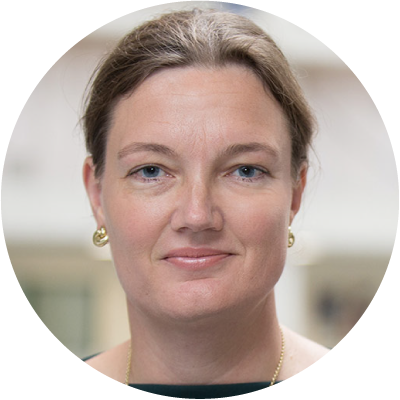Leaders in the Field: Anke-Hilse Maitland-van der Zee on breath among the omics
Published on: 10 Mar 2022
 We spoke to Anke-Hilse Maitland-van der Zee, Professor of Precision Medicine in the field of Respiratory Disease at the Academic Medical Centre, Amsterdam. Anke-Hilse leads a team of more than 40 researchers, is the successor to the pioneering breath researcher Peter Sterk, investigating biomarkers for both pediatric and adult respiratory diseases.
We spoke to Anke-Hilse Maitland-van der Zee, Professor of Precision Medicine in the field of Respiratory Disease at the Academic Medical Centre, Amsterdam. Anke-Hilse leads a team of more than 40 researchers, is the successor to the pioneering breath researcher Peter Sterk, investigating biomarkers for both pediatric and adult respiratory diseases.
Anke-Hilse has published approaching 300 articles in peer reviewed journals. She chaired the European Research Network of Pharmacogenetics for almost 10 years, and is the current president of both the Federation of Innovative Medicine Research in the Netherlands (FIGON) and also the European Association of Systems Medicine (EASYM). Anke-Hilse is registered to speak at the Breath Biopsy Conference in November 2022 (#BBCon22).
How would you describe your research area of interest?
My Chair is Precision Medicine in Respiratory Disease, so we are very interested in phenotyping chronic respiratory diseases like asthma, COPD and cystic fibrosis. We do that by studying different kinds of biomarkers, including volatile organic compounds (VOCs), genetics, epigenetics, transcriptome and microbiome – so we’re looking at a lot of different omics markers and we’re trying to understand biological mechanisms.
For example, not everyone’s asthma is caused by the same biological mechanism, so can we figure out what’s really going on in a patient? Biomarkers can help us to identify treatable traits, or certain factors that we can find a therapy for.
That’s really exciting. When did you first become passionate about this area?
I initially studied Pharmaceutical Sciences and then had the opportunity to do a PhD on pharmacogenetics in cholesterol lowering medication. I started to look at genetics as a marker for effectiveness of therapy and a way to optimize therapy for individual patients. I realized that, while you can do a lot of really useful stuff with genetics, there’s also a lot of things that are not solely dependent on genetics. You have the same genetics all your life, but sometimes you are ill, and sometimes you’re not.
I became more and more interested in other biomarkers and how we could combine them, to understand what’s biologically going on. A little more than five years ago, I was offered a professorship at the Amsterdam UMC, in the Respiratory Disease department. We started to do a lot of work with the microbiome, and this department had a large history of working with VOCs, with Professor Peter Sterk, who’s one of the founders of this sort of research.
The concept of personalized medicine, of really looking at individual patients, and working out what’s going on and what we should do to help them, is something that really speaks to my heart. I mean, whenever as a physician, you have a patient in front of you, you want to do what’s best for them, but now we have more and more tools to help actually do this – to figure out what’s really going on and prescribe optimal individualized treatments – that’s what makes this a really interesting area.
What makes breath an attractive diagnostic tool compared to other kinds of samples?
Working in the respiratory field it’s logical to be interested in breath – air is coming directly from the lungs, so you’re measuring something that was in direct contact with your key area of interest. But also, breath is very easy to collect. It’s a very non-invasive measurement, it doesn’t hurt. We do a lot of research in children, so it’s especially important to find non-invasive ways to collect information that you can repeat regularly.
“We are hardly doing any studies with only eNose anymore, we almost always combine it with GC-MS to be able to also try to understand what we’re measuring.”
There are a lot of different ways to analyze exhaled breath. What do you think is the way forward?
The number of different ways that we capture and analyze breath currently can make validating results very difficult. In my group, a lot of work has been done with eNoses. They’re really interesting, because they’re a quick way of getting a breath profile. If you can compare that profile with a lot of other profiles, you can potentially provide an immediate diagnosis. But on the other hand, you don’t know what you’re measuring. It’s interesting, but it’s a black box – usually, we have no idea what the specific compounds are that that lead to this profile. That’s why in my group, we’re doing more and more GC-MS work.
We need the GC-MS to figure out what we’re measuring with the sensors. Once you find a good sensor, then you don’t need a GC-MS for every patient, and that makes it much easier because using a GC-MS is a lot of work and introduces a significant time delay. But, of course, before we can do that, we have to understand the compounds better. You can get really interesting results with an eNose, but without the ability to identify individual compounds there’s so much we cannot explain and it will always be hard to defend getting into the clinic.
We are hardly doing any studies with only eNose anymore, we almost always combine it with GC-MS to be able to also try to understand what we’re measuring.
What are you working on at the moment?
We really want to figure out what compounds can help us to identify whether a patient with cystic fibrosis has contracted a Pseudomonas infection. We have published a paper and have one compound that we have identified with GC-MS which seems, especially in children, to be very important. The next step is to find a sensor that can measure it – once we understand the compound that we need to measure, the sensors are handy, because they give you an immediate answer. That means they’re also easy to implement in any clinical setting and maybe even a home setting.
The other thing we’re working on is a very simple device within which we can change the sensors to just measure specific things. So, for example, we could screen for the Pseudomonas infections mentioned above, with this simple device, in a home setting.
How has the current pandemic affected your research?
It’s much harder to see patients. It was better for a while but now it’s starting to have an impact again. Also, for the GC-MS measurements, we were using a set-up, with some reusable parts –we’ve had to stop all of that! Everything where cross contamination is possible, we had to stop, so we have now developed a completely disposable setup, and this is part of the 3TR project that we’re in together with Owlstone and we are going to compare our way with yours to see what kind of results we can get and understand the strengths of each.
When did you first become aware of Owlstone Medical and in what context?
It was probably when I started to work in Amsterdam about five years ago, because before that I did not do much with VOCs. We talked quite a bit about doing projects together, but our first opportunity to work together came about because of the 3TR project. We’re now going to collaborate on a study where we start biological treatments in asthma patients and take breath measurements both before and after to see in which patients they work well.
How can we progress breath testing towards the clinic?
I have done so many biomarker studies and I still think that VOCs have a great potential – we’ve seen so many associations with different outcomes. It’s a shame that it’s so been hard to get breath tests validated until now. Maybe in the short-term we need to try combining VOC measurements with other measurements, such as lung function measurements, to get a more complete picture.
I like the idea of trying to take more measurements over a longer period in the same patients. Most of our studies in the past have compared a group of patients with a group of people without the disease. If we compare patients with themselves over time then if something changes in the body, that profile will change. This might help us to detect earlier when someone should see a physician or start a treatment. We need to keep collaborating and finally get this technology where it needs to be, which is with the patient.
“We need to collaborate because if we cannot convince each other in the field, then we’re definitely not going to convince people outside of the field.”
How important is it that we start to collaborate more fully as a field?
If we really want to progress the field, we need to continue being enthusiastic and optimistic. There are hurdles to be overcome and we need to do it together, in the right way. We need to collaborate. That’s what I liked about 3TR – everyone’s in there together.
We need to share what we’re doing, and we need to help each other because together we can make it work. Our methods have different pros and cons but, in the end, breath researchers need each other and in the past there has not been enough collaboration. Sometimes in the past it has felt like everyone was doing their own inventions. We need to collaborate because if we cannot convince each other in the field, then we’re definitely not going to convince people outside of the field.
Recent papers from Anke-Hilse Maitland-van der Zee’s group:
- Targeted exhaled breath analysis for detection of Pseudomonas aeruginosa in cystic fibrosis patients
- eNose breath prints as a surrogate biomarker for classifying patients with asthma by atopy
- Exhaled breath analysis by use of eNose technology: a novel diagnostic tool for interstitial lung disease
- Increased day-to-day fluctuations in exhaled breath profiles after a rhinovirus challenge in asthma
- Clinical and inflammatory phenotyping by breathomics in chronic airway diseases irrespective of the diagnostic label
This blog post is part of our ongoing series of in-depth interviews with influential leaders currently working in breath research. Other ‘Leaders in the Field’ interviewees have included Professor Richard Yost, inventor of the triple quadrupole mass spectrometer, Salman Siddiqui, a specialist in breath testing for inflammatory respiratory diseases, and Professor James Covington, a leading voice in VOC biomarker research.
READ MORE INTERVIEWS IN THIS SERIES
You can hear more from Anke-Hilse Maitland-van der Zee and other influential voices in breath research, such as Chris Brightling from The University of Leicester and Renato Zenobi from ETH Zurich, at the Breath Bioipsy Conference in November 2022.
